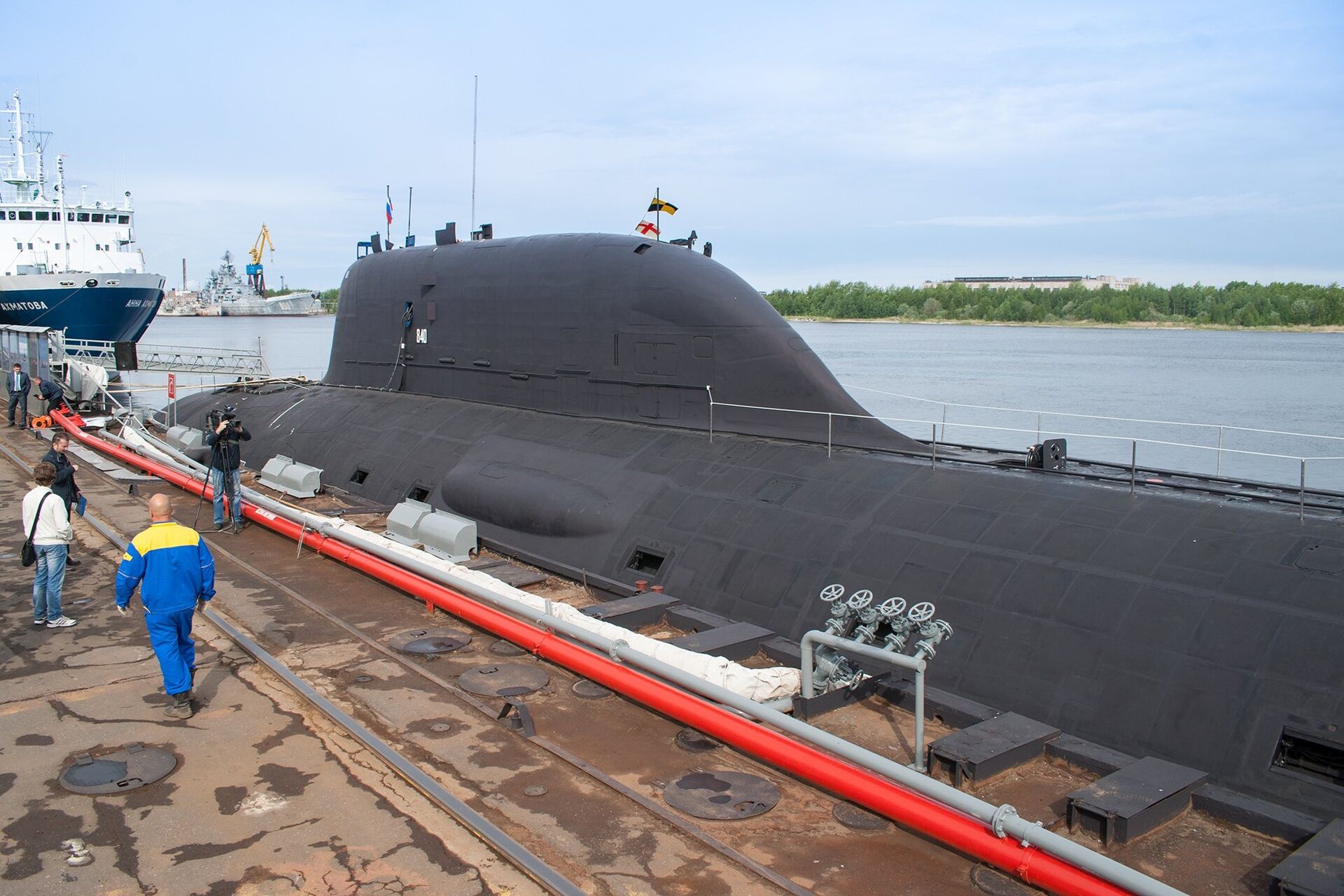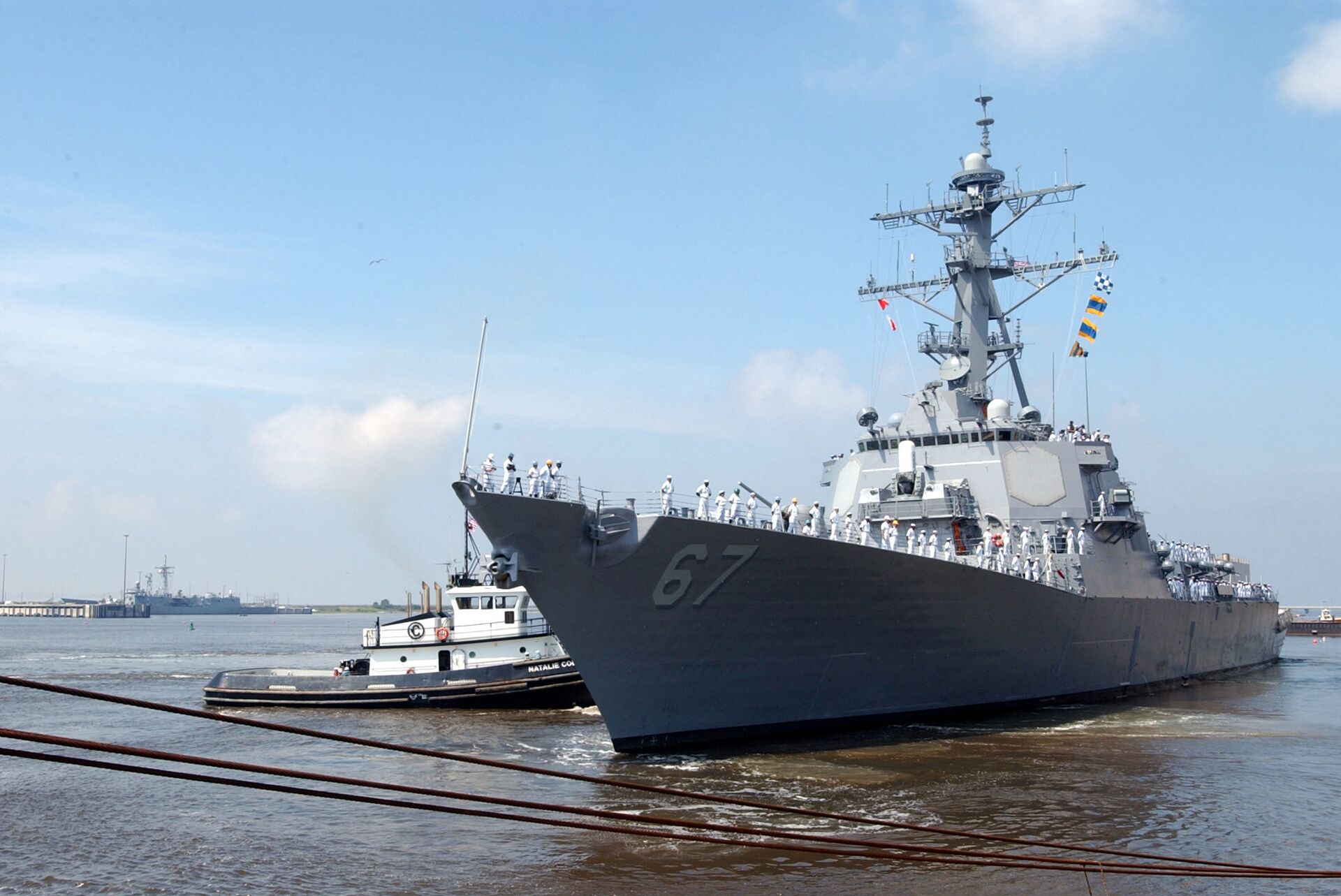US Navy Taps Atlantic Destroyer Task Group to Hunt for Russian Subs, Citing ‘New Strategic Threats’

CC0 / US Navy//Damon Grosvenor /
Subscribe
The East Coast of the United States was no longer considered an "uncontested" area or an automatic "safe haven" for its ships, said US Navy Vice Admiral Andrew "Woody" Lewis in 2020, as he cited concerns over reportedly increased activity of more advanced Russian submarines in the Atlantic Ocean, better able to evade detection.
The US Navy is gearing up to better protect its East Coast from perceived Russian submarine threats in the Atlantic Ocean as part of a new initiative called Task Group Greyhound, according to The Times and other US media reports.
Embedded within the Navy’s Optimized Fleet Response Plan, it is aimed at ensuring that
guided-missile destroyers that recently completed deployments are on-the-ready to deploy on short notice.
Greyhound is “designed to provide the fleet with predictable, continuously ready and fully certified warships,” Rear Adm. Brendan McLane, the commander of Naval Surface Force Atlantic, said aboard USS Thomas Hudner (DDG-116) in Mayport, Fla.
He added that the ships will be ready to accomplish the full range of missions, including “tracking Russian undersea activity in the Atlantic and maritime homeland defense for our nation.” USS Donald Cook (DDG-75) and Thomas Hudner are the first destroyers to become part of the task group.
“We’re going to be ready for when it is real and there is an out-of-area deployer that comes here — we’ll have two ships that are ready to go, and we’ll be ready to get underway at a moment’s notice,” McLane said.
USS The Sullivans (DDG-68), currently deployed with the UK’s Queen Elizabeth Carrier Strike Group, will join the task group in January. USS Cole (DDG-67) and USS Gravely (DDG-107) will join the project after USS Donald Cook begins its maintenance period.
“… The idea is we put in the ships that already have deployments under their belt and are most ready and most experienced,” McLane told reporters.
Based at Mayport and Norfolk, Va., the task group is set for full operational capability by June 2022, according to McLane.
“The strategic threat to the homeland has entered a new era and our key competitors have deployed and continue to advance a range of capabilities to hold the homeland at risk,” McLane said.
The creation of the new task group comes as the US Navy has been refocusing efforts to address what is sees as Russia’s growing undersea capability in the Atlantic region. The Russian Navy was cited as having developed next-generation attack submarines armed with long-range missiles, prompting the US Navy to up its game.

The Severodvinsk, the first of Russia's multirole Yasen K-560 submarines, by the pier of the Sevmash shipyard in Severodvinsk, Arkhangelsk Region. file photo
© Photo : press-service of JSC "PO "Sevmas
/ Last year, Vice Adm. Andrew “Woody” Lewis warned that the US East Coast was no longer seen by the Navy as an "uncontested" area for its ships and submarines due to “increased Russian submarine activity” in the Atlantic Ocean.
"Our new reality is that when our sailors toss the lines over and set sail, they can expect to be operating in a contested space once they leave Norfolk. Our ships can no longer expect to operate in a safe haven on the East Coast or merely cross the Atlantic unhindered to operate in another location," Lewis said at a meeting of the US Naval Institute and the Center for Strategic and International Studies think tank jointly hosted on 4 February 2020.

The Kalibr land attack cruise missile
© Wikipedia / Vitaly Kuzmin
"We have seen an ever-increasing number of Russian submarines deployed in the Atlantic, and these submarines are more capable than ever, deploying for longer periods of time, with more lethal weapons systems," he added.
Concerns were cited regarding Russia’s nuclear-powered attack submarines from the Project 945A Kondor class, also known as the Sierra II class, as well as Project 885 Yasen class guided missile submarine K-560 Severodvinsk.
The latter can be armed with Kalibr missiles, among other weapons, and is known for having an especially low acoustic signature.
The Russian Navy’s nuclear-powered special mission submarine, the K-329 Belgorod, a modified Oscar II class guided-missile sub, is designed to operate unmanned underwater vehicles. On 25 June 2021 the "Belgorod" left the Severodvinsk shipyard on her trial regimen by the builder Sevmash.
Russia is also outfitting nuclear-powered submarines to carry state-of-the-art, 79-foot-long underwater Poseidon drones.
The autonomous, nuclear-powered, and nuclear-armed unmanned underwater vehicle under development by Rubin Design Bureau is capable of delivering both conventional and nuclear payloads and was announced by Russian President Vladimir Putin on 1 March 2018.
Its development incorporates use of stealth technology to elude acoustic tracking device.
"Unique characteristics of the Poseidon system will help the navy to successfully combat aircraft carriers and strike groups of a potential adversary in any oceanic theater of war," Adm. Igor Katasonov, chief analyst of the general staff, previously said.
As Vladimir Putin unveiled the Poseidon nuclear-powered autonomous drone torpedo in 2018 with several other new strategic nuclear delivery systems it was underscored that the advanced weaponry was aimed at guaranteeing Moscow’s ability to retaliate in the event of a large-scale enemy strike. Russia has pledged not to use its strategic weapons unless attacked.





